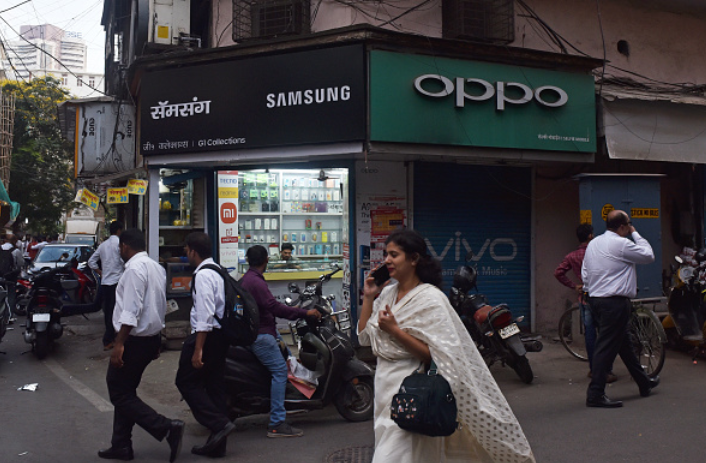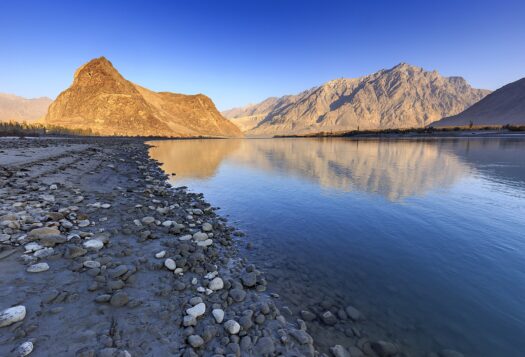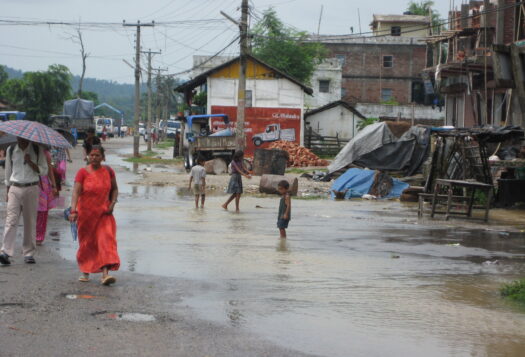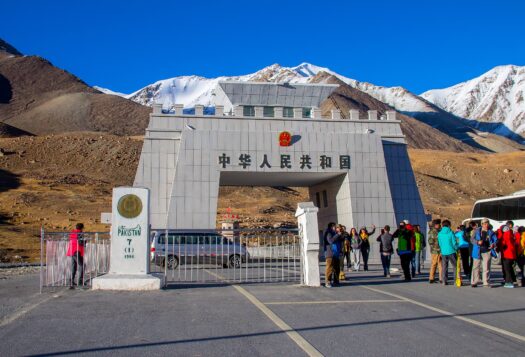
The birth of the IMF and an independent India occurred in close parallel. As the world saw an end to WWII and sought to rebuild, India, too, was trying to rejig its economic coffers after two centuries of colonial rule. Despite not being fully independent yet, India became a founding member of the IMF in December 1945. For the next four decades, New Delhi would balance the economic benefits of IMF participation with its commitment to non-alignment and socialist tendencies. However, this balancing act would finally come to a close in 1991.
During an economic crisis in 1991, India had few avenues to secure its economic independence. With growing inflation and a balance of payments conundrum, New Delhi would turn to the IMF, choosing to implement a series of reforms liberalizing the economy. Directed by the Fund, these reforms paved the way for India’s spectacular growth over the past thirty years and its rise as a global economic power. In tracing the history of India’s rise, understanding its relationship with the IMF provides essential insights into its economic outlook today.
The Birth of the IMF and an Independent India
After a propitious start, India’s political ideology of non-alignment cautioned engagement with Bretton Woods institutions. The American power bloc saw the world in a Manichean duopoly of being “with us or against us.” At the same time, Nehru’s Fabian-style socialism and centrally planned economy akin to the Soviet Union caused India to gravitate further from the Western-style capitalistic model in the late-1940s. India was not making a political statement. A country that was a colony of the Raj for two centuries was not prepared to trade one set of Western faces in the British East India Company for another set of Western faces in American capitalism.
Directed by the IMF, reforms paved the way for India’s spectacular growth over the past thirty years and its rise as a global economic power.
As communist nations of the Soviet Union and China walked out of the system in the 1950s (they would later rejoin in the 1980s), the Fund was seen even more so as a financial arm of the West. New Delhi saw the IMF as mollycoddling the capitalist bloc and interfering in the economic policy of newly independent countries trying to find their own post-independent identity. However, New Delhi felt that it should support the Fund since it would help end the depreciation of currencies by establishing international exchange rates. Despite its Western roots and European heads, the IMF showed interest in the economic security of newly independent countries across Asia and Africa. India’s relationship with the IMF in the early years was secured.
An IMF Recipient
While hesitant to entangle itself within the Bretton Woods system, three major IMF programs from 1966 to 1991 spurred the path to liberalization and shaped India’s economic outlook today. In 1966, India’s third Soviet socialist-style five-year plan failed, forcing it to take “plan holidays.” The Green Revolution program soon started to avoid droughts and a farming crisis in a primarily agrarian economy. The farming-rich state of Punjab was the epicenter, where the 1965 war with Pakistan had already strained the agrarian situation. Nationwide, inflation had skyrocketed, foreign exchange reserves had dried up, and exports were non-competitive. India needed relief.
The 1966 IMF program provided India with much-needed economic assistance despite political concerns. According to former Civil Servant V Srinivas, IMF and Indian officials met in 1966. India agreed to devalue the rupee by 36.5 percent, hoping to spur the moribund exports and spur import liberalization ahead of its Fourth Plan. Parliament clamored that the deal was a “sell-out to America” and Western powers, as the Indira Gandhi government reiterated its commitment to a centrally planned socialist economy free from Western dogma. It was a horrible year for India, which had already suffered political turmoil following the mysterious death of its second Prime Minister, Lal Bahadur Shastri. However, devaluation had an immediate impact, as India averted famine and bankruptcy. The Green Revolution helped India add self-sufficiency for crops such as rice, wheat, and maize, and Indira Gandhi implemented and codified import substitution as a state policy.
In 1981, India faced an economic crisis again. As India spiraled into a Balance of Payment (BOP) deficit, the IMF issued a $5.8 million loan, its largest yet. However, the agrarian crisis continued with poor monsoons, industrial growth, and atrophied foreign direct investments (FDI) in the License Raj era. The lack of reforms in the labor market also precluded infrastructure development. Coal shortages and grid failures saw widespread power outages, and the familiar beast called inflation plagued Indian households.
Once again, the IMF would step in. Dr. M. Narasimham, the then Executive Director of India to the World Bank and later IMF, convinced Prime Minister Indira Gandhi that India should appeal for an IMF loan due to the impending BOP crisis, much to the chagrin of then Finance Minister and Finance Secretary. India was in a better position than it was in 1966. Nevertheless, the Reagan administration took umbrage at India for its closed-off economy and resistance to free market policies, which made America “the shining city on the hill.”
Differing economic philosophies fueled tensions between the United States and India, even as the IMF package arrived. In fact, the United States even abstained from the loan vote. The U.S. Treasury Department was unconvinced that the loan would ameliorate India’s BOPs and become a surplus. However, the State Department and the World Bank believed the nearly $6 billion loan was needed and saw an opportunity for India to liberalize its imports, enhance its exports, and work towards mitigating energy dependency. Reforms did not start in 1981, but India’s market turn was around the corner as IMF loans helped New Delhi check inflation, ease the BOP crisis, and gradually open up.
The Reforms of 1991:
Once again, New Delhi found itself in economic peril. During India’s 7th five-year plan, the BOP gradually deteriorated as domestic oil production dwindled and external prices rose due to the Gulf War. There was pressure on IMF loan repayments, piling on to the external debt. Foreign exchange reserves evaporated as the fiscal deficit added to the current account deficit, further affecting the BOP crisis. Inflation was high, food grains were low, and the 1990-91 Union Budget spoke of despondency with a 4-4.5 percent GDP growth.
After four decades of political independence, India was struggling for economic independence. While the government continued to call for ‘self-reliance,’ the mood was ominous. The precariousness was evinced when the fiscal deficit spilled over into the current account deficit. This fiscal imbalance exacerbated inflation and the BOP crisis. The IMF noted that to deal with the BOP crisis, seismic policy changes would need to be introduced. The IMF saw that change came close in 1981 but was delayed. A decade later and a cataclysmic crisis meant that policy overhaul was knocking.
In 1991, India saw no other avenues for economic relief and accepted emergency loans totaling $2.2 billion from the IMF. With no “soft options” left, newly appointed Prime Minister Rao assured the IMF that systematic policy changes would be introduced to deal with the BOP crisis. Finance Minister Manmohan Singh and PM Rao assured the IMF that the government intended to implement a wide range of policies to improve the efficiency and competitiveness of the Indian economy. Shockingly, the crisis was so deep that there was little to no major opposition in Parliament.

What followed then was an era of sweeping reforms across the financial sector with the Securities and Exchange Body of India (SEBI) instituted, the National Stock Exchange (NSE) established, gradual opening of the mutual fund industry, deeper capital markets, and India was now open for business. Today, the economic cognoscenti and top bureaucrats attest that economic reformation would not have been possible without the IMF program.
India and the IMF Today
It is hard to fathom how India went from a bailout in 1991 to pledging its gold in 2008, at a time of global financial shock. Looking back, the 1991 reforms on the back of the IMF loan did not just aim to resolve the BOP crisis but brought about a seminal overhaul. The reforms reversed the interventionist policies that held India economically captive for four decades, sidestepped problems causing slow growth and a sluggish economy, and liberalized trade. This form of liberalization made exports more competitive and paved the way for industrial liberalization and loosened controls on imports. The reforms provided not just an economic lifeline but gave the country a new life.
Despite not being a treaty ally with the United States, India was able to command a significant seismic shift in the strategic partnership, as it went from a country that sought aid to a country that now negotiated on trade.
Additionally, the 1991 IMF bailout and subsequent reforms were economically epochal and geopolitically significant. Despite not being a treaty ally with the United States, India was able to command a significant seismic shift in the strategic partnership, as it went from a country that sought aid to a country that now negotiated on trade.
As India takes on the G20 Presidency for 2023, the IMF sometimes represents the antiquated old financial guard, dictating to emerging economies and relics of Western power blocs. Indeed, the rise of China and G20 nations adds to the argument. However, for India, policies and a new sense of confidence came out of a BOP crisis. A decade later, the 1991 reforms following the IMF loan announced to the world that India was open for business. Now, no longer defined as a low-income developing country, the question remains whether India can become the superpower it aspires to be.
Also Read: Making the “Indian Dream” of Digital Upward Mobility into Reality
***


